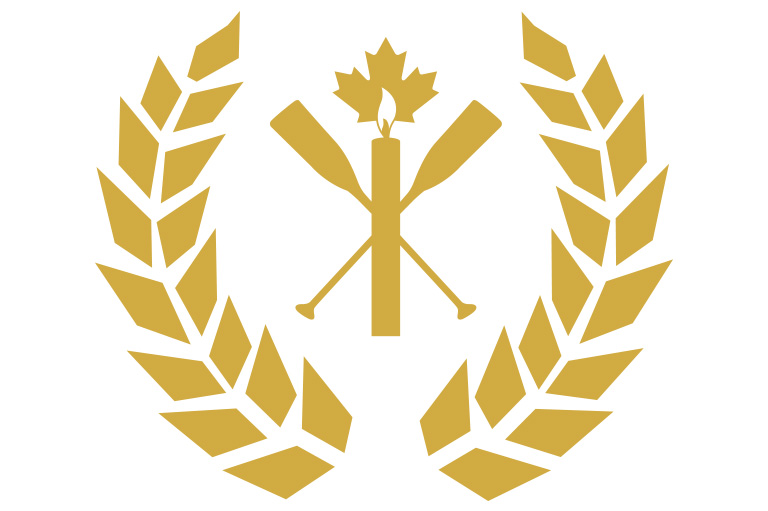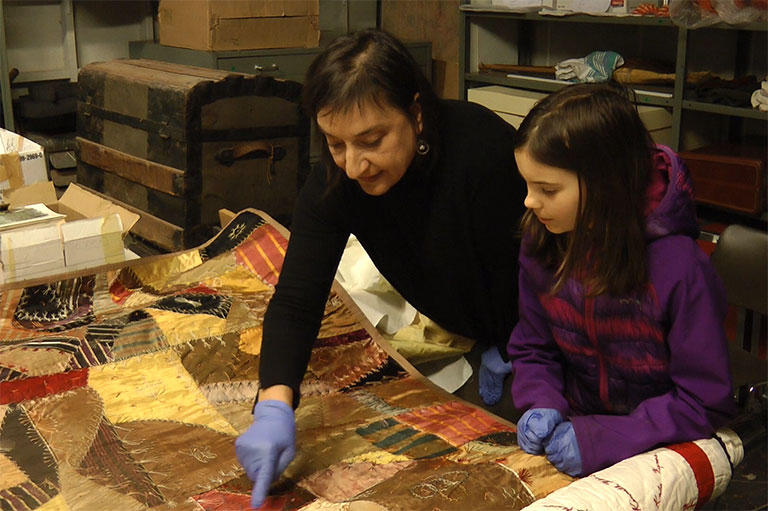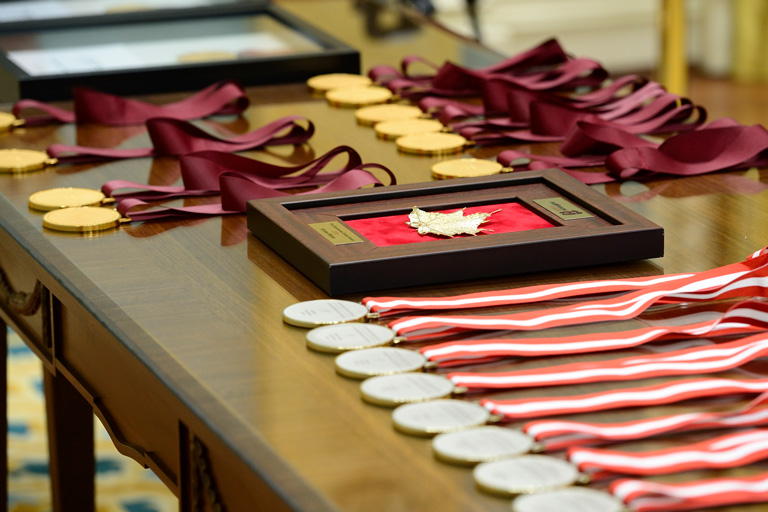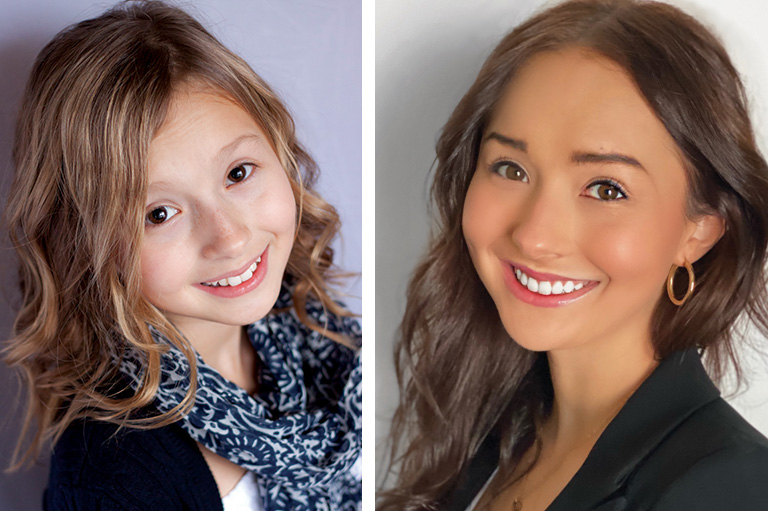2023 Finalists for the Governor General's History Award for Excellence in Teaching
Canada’s History is pleased to announce this year’s shortlist for the Governor General’s History Awards for Excellence in Teaching. Through their unique projects, these 15 finalists demonstrate many best practices in history education, including creating authentic learning experiences, encouraging historical research and critical thinking, incorporating the historical thinking concepts, and considering Indigenous perspectives and worldviews.
Established in 1996, the award honours six teachers for innovative approaches to teaching Canadian history. The winners will be announced in the fall.
Congratulations to this year’s finalists!
PLUS: NOMINATIONS ARE ACCEPTED YEAR-ROUND! IF YOU KNOW AN AMAZING HISTORY TEACHER, NOMINATE THEM TODAY!
Ryan Barker
Crescent Heights High School, Calgary, Alberta
The 150th anniversaries of the early Numbered Treaties give Canadians opportunities to pause and learn more treaty history for reconciliation. Ryan Barker helps connect his high school students to the making of Treaty 7. He designed a project inspired by field trips to Blackfoot Crossing (the historic site where the treaty was made), earlier work with Indigenous screenwriters and filmmakers, and a local cultural society. Barker’s students collaborated in the writing of an adapted screenplay based on the events of September 1877, informed by the perspectives of elders and research from “the Dean of Alberta historians,” the late Hugh Dempsey. Combining historical thinking with creativity and empathy, students achieved a better understanding of treaty relationships and the spirit and intent of Treaty 7.
André Boutin-Maloney
Bert Fox Community High School, Fort Qu’Appelle, Saskatchewan
"Finding Common Ground: A Treaty Walk (& Roll) of Fort Qu'Appelle, Saskatchewan" is a collaborative project that combines research, storytelling, and geographic mapping into a curated self-guided tour. Students in André Boutin-Maloney’s class overlayed physical locations within the community with digital multimedia elements designed to educate and prompt reflection on the complexities Canada's colonial history and its ongoing implications. By incorporating historical research, multifaceted thinking, ethical analysis, and historical thinking concepts, the Treaty Walk serves as a powerful tool for fostering empathy, reconciliation, and awareness of the need for meaningful partnership in contemporary society. Beyond the classroom, the project's impact reverberates as an accessible tool for education and tangible action towards truth and reconciliation by inspiring others to undertake Treaty Walking initiatives within their own communities.
Julie Brisson
Jaanimmarik, Kuujjuaq, Quebec
"La philosophie pour enfants dans un contexte historique" was a project led by Julie Brisson for her classroom in the community of Kuujjuaq in Nunavik. Brisson presented her students with historical events that feature human values in order to lead a debate. Students asked questions and had to name the values of the time in order to understand the actions taken by the historical actors. Then, they had to name concrete actions related to their current personal values if a similar event happened today. Students not only studied continuity and change, but were given concrete means of having the power to change in today's society.
Jo Anne Broders
Smallwood Academy, Gambo, Newfoundland and Labrador
Jo Anne Broders organized and facilitated an international collaboration between her grades 9 and 11 students and a classroom in Germany. Through multiple virtual conversations, students were able to share their history, culture, community and language. Students, teachers, and educators explored how education can be used as a healing tool for the difficult histories in Germany and Canada’s past. By participating in an international classroom, Canadian and German students were able to connect with peers across the world, become student leaders in this experience, and solidify their understanding of their roles as global citizens.
Pascal Bureau
Selwyn House, Montreal, Quebec
As part of the Secondary 3 history of Quebec and Canada course, Pascal Bureau set up a project where students use the content of the course to create a board game reflecting a theme of New France. Bringing together history and entrepreneurship, students present their projects in a competition for board game designers. This project provides students with the opportunity to interact with their school community and develop autonomy. The story becomes the vehicle that allows students to flourish.
Chantal Clabrough
Westmount High School, Westmount, Quebec
Chantal Clabrough designed the Westmount High School Memorial Project as a way to engage students in preserving their school’s history. From 2014-2022, Clabrough’s grade 10 history students researched the lives of the 141 school alumni who died in service to Canada in the Second World War. After analyzing primary source documents from the school, city, and digital archives, and connecting with community members, students designed digital profiles for each fallen alumnus that are housed on Westmount High School’s website. Through this project, students developed an emotional connection between the experiences of the school’s alumni and the major battles of the Second World War, while gaining an understanding of local, national, and international history.
Erin Doupe
John F Ross C.V.I, Guelph, Ontario
The Story of a Soldier project is an investigation into the life of a local resident and an exploration of local history during the First World War. Students in Erin Doupe’s grade 10 history class researched a person listed on Guelph’s cenotaph and constructed a one-page essay using primary source evidence to describe what they looked like, where they lived, who they were related to, what type of work they did, which military unit they belonged to, and when and where they served. The completed essays were mailed to the current residents of these former soldiers' and nurses' homes, so the people who live there now can learn about the history of the place they call home.
Brad Dowler
Springs Christian Academy, Winnipeg, Manitoba
High school teacher Brad Dowler designed a project that deals with past and current movements towards the creation, alteration, removal or replacement of historical monuments and namings. Students examined the issues surrounding existing monuments and namings, as well as the municipal, provincial, and federal criteria and guidelines behind these commemorations. As a final project, students researched a person, event, or idea of historical significance and made a recommendation in support or against recognition, while giving attention to differing stakeholder views as well as the moral perspectives of the past and how those compare to current sensibilities.
Wendy Driscoll
Bicentennial School, Dartmouth, Nova Scotia
Confederation was complicated, controversial, and often told as a one-sided history. In Wendy Driscoll’s History in the Baking project, her middle school class wonders how the conversation may have differed with other voices. What if Mi’kmaq, Black Canadian, or Acadian voices had been heard at the Charlottetown Conference? How about tenant farmers or women? Using a reader's theatre style script, students imagine other points of view on Canadian confederation. They creatively reflect on their learning in ways such as writing a new scene or changing the famous Confederation photo, while participating in insightful and age-appropriate conversations about perspective, fairness, and inclusion.
L. Andrea Izzo
Oscar Peterson Public School, Stouffville, Ontario
The No. 2 Construction Battalion project came about through a partnership with the staff at the YRDSB Museum & Archives. Using primary and secondary sources, L. Andrea Izzo’s grade 8 students learned about the history of the No. 2 Construction Battalion, Canada’s first segregated unit and largest all-Black unit. Their culminating task was to create a website in the style of a digital museum exhibit panel that educated other Canadians about the No. 2 CB and a specific soldier from the unit. Student-created websites had to have photographs, documents, written historical information, external links, and a mapping component (MyMap), combining visual-spatial information and geographic skills. The students shared their learning and presented their websites in an exhibit gallery open house for grades 4-8 classes at their school on Remembrance Day.
Annie Masson
Éducation internationale Filteau, Québec City, Quebec
The Quiet Revolution in Songs is a project that aims to discover the highlights and important people of this period of history using different primary and secondary sources. It is through the analysis of songs and documentary files, such as a travel diary of Expo 67, that 6th grade students are invited to develop their historical empathy. They also have to establish facts about this period and understand the context, then make a connection with what the more current songs tell us about the different realities of society.
Maliesha Muralidharan
Castlemore Public School, Markham, Ontario
Maliesha Muralidharan designed a unit plan for her grade 8 history class that shifted the focus on how students learn to allow them to showcase their knowledge through art, drama, pictures, quotes, social media, debates and rants. The goal was to hook students by getting them excited, engaged and interested in history and having them dive into the historical thinking concepts in an organic way. Throughout the unit, there are opportunities for every learner to show what they know through multiple entry points, while considering multiple perspectives and the narrative of history.
Andreya Padmore
Orde Street Public School, Toronto, Ontario
In Andreya Padmore’s class, students learned about current and historical events that Canada should be proud of, as well as those that took Canada time to recognize and accept responsibility for. Students went into this project with questions and interest about what happened in Canada and left with more questions, knowledge, and steps to take action toward creating a better future for Canada. For their final project, students were tasked with selecting a racialized Canadian trailblazer or a racialized Canadian inventor to research. Their work was published in a book that was professionally bound and placed in the library so others can learn about the amazing people that have come from Canada.
Shannon Rankin
Centre Dufferin District High School, Shelburne, Ontario
Shannon Rankin encourages her grade 10 students to consider different, sometimes historically competing, altered, or silenced voices in the historical record. Her First World War artifact project requires students to create and compose critical reflections on and interpretations of Canada’s First World War story. Students create a theme to explore on a “micro” level, recreating items representing a person, place, and thing that support their theme. With themes ranging from “Canada Matures” to “Problematic Enlistment”, students are able to craft their own lens to view history through, and often choose perspectives that reflect their own sense of self and personal identity.
Ramandeep Sarai
Toronto District Elementary School, Toronto, Ontario
Elementary teacher Ramandeep Sarai guided a group inquiry project with students in grades 4-8 in her special education class to explore the question, What does it mean to be Canadian? Students used this as a jumping off point to look at the experiences and contributions of Canadians of Chinese descent in the past and present through the use of primary and secondary sources. This project was created with accommodations and modifications to allow students to access, understand, and showcase their learning in a variety of ways. The outcome was for students to have a true understanding of Canadian history through the history of Chinese immigrants and their descendants, and how these narratives are a part of a Canadian Identity.
Themes associated with this article
Advertisement




